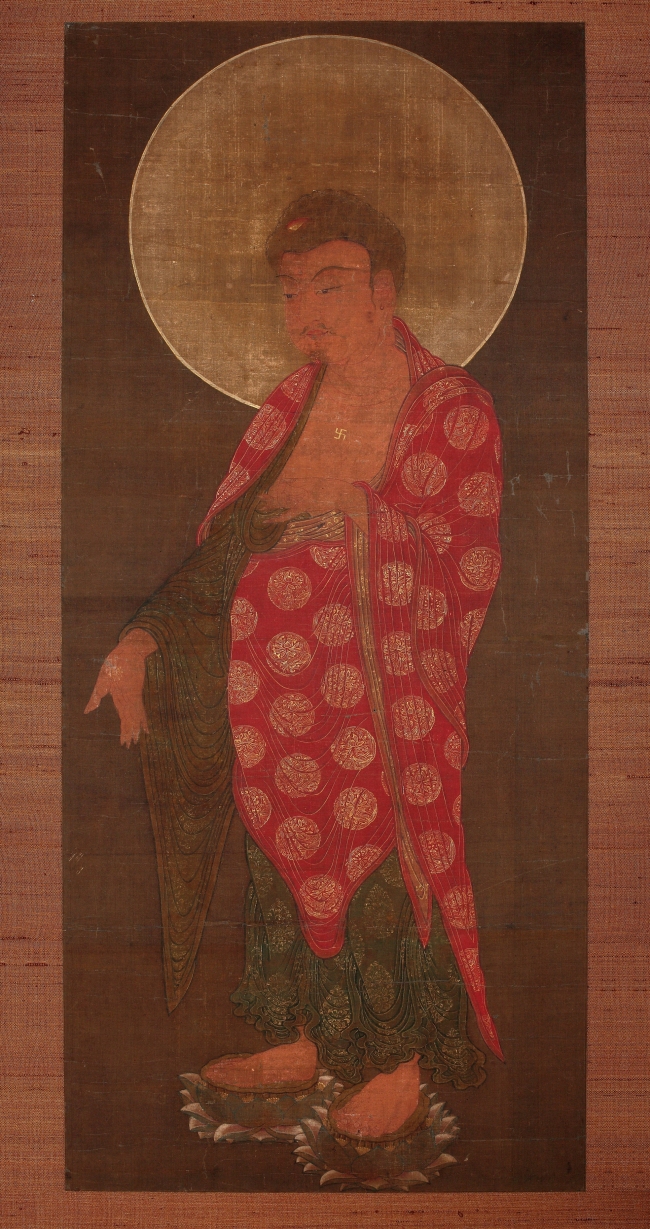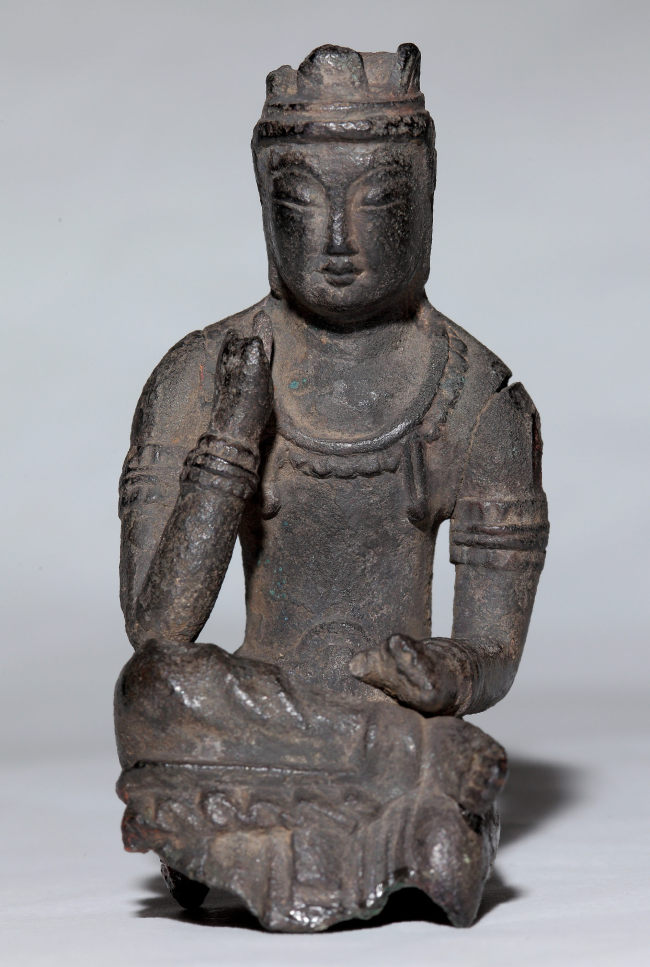Rare Goryeo Buddhist painting found in Italian museum
14th-century painting considered masterpiece of Buddhist painting
By Lee Woo-youngPublished : Jan. 9, 2013 - 20:17
A Buddhist painting from Goryeo period (918-1392) was found in an Italian museum, according to the National Museum of Korea on Wednesday.
The full-length portrait of Amitabha Buddha was discovered when a curator of the Korean national museum was researching the collection of Korean artifacts at the National Museum of Oriental Art in Rome.
“The painting was in good condition,” said Kwon Gang-mi, another curator of the museum. “And it wasn’t known to the academia in Korea or Europe.”
The full-length portrait of Amitabha Buddha was discovered when a curator of the Korean national museum was researching the collection of Korean artifacts at the National Museum of Oriental Art in Rome.
“The painting was in good condition,” said Kwon Gang-mi, another curator of the museum. “And it wasn’t known to the academia in Korea or Europe.”

The painting, “Amitanaeyeongdo,” depicts Amitabha Buddha wearing a red robe with gold lotus flower patterns. It is believed to have been made in early 14th-century Goryeo based on the shape of the face and patterns on the clothing.
“It is a masterpiece of Buddhist painting as its colors and patterns are well presented,” Kwon said.
Min Byeong-chan, director of the exhibition department at the National Museum of Korea, added that the painting is one of the smallest among similar Amitabha Buddha paintings. The discovery of the painting also supports historical records that say that such paintings were used during royal funerals in the Goryeo period.
Goryeo Buddhist paintings are widely recognized as some of the most beautiful religious artworks in the world. However, only about 160 such paintings are known to exist, most of them overseas.
“There are few Goryeo Buddhist paintings left in Korea. Most of them are in Japan and the rest are in the U.S. and European countries,” Kwon said.

A Buddhist statue of the Three Kingdoms period was also found during the research. The 8-centimeter-tall Buddha statue, sitting cross-legged and wearing a jewel crown, was on display at the Italian museum.
The statue also shows distinct characteristics of the Three Kingdoms period of Korea such as the gentle smile, well-formed features, straight upper body and drapes in the dress.
The National Museum of Korea said they are planning to introduce the two newly found ancient Buddhist artworks to the Korean public in the near future.
The National Museum of Oriental Art of Italy opened a Korea section in 2010 and displays about 40 artworks including celadon ware, Buddhist statues, paintings and calligraphy works and metal crafts.
The Korean national museum offered resources related to ancient Korean artwork to the Italian museum in 2008 to facilitate the operation of the Korean section.
By Lee Woo-young (wylee@heraldcorp.com)



















